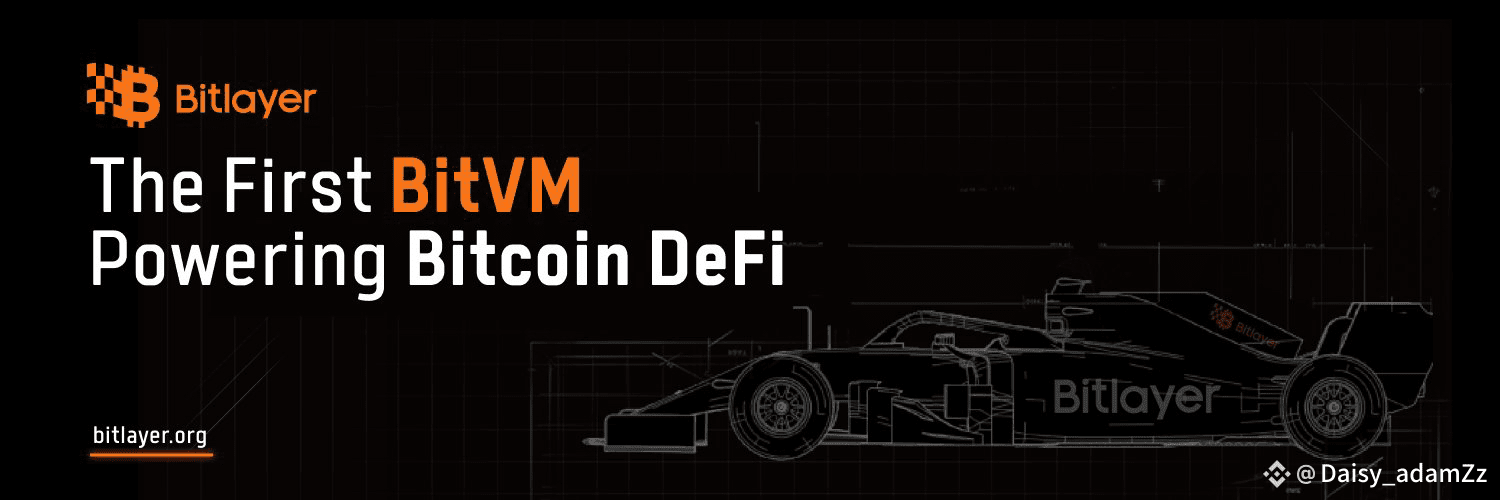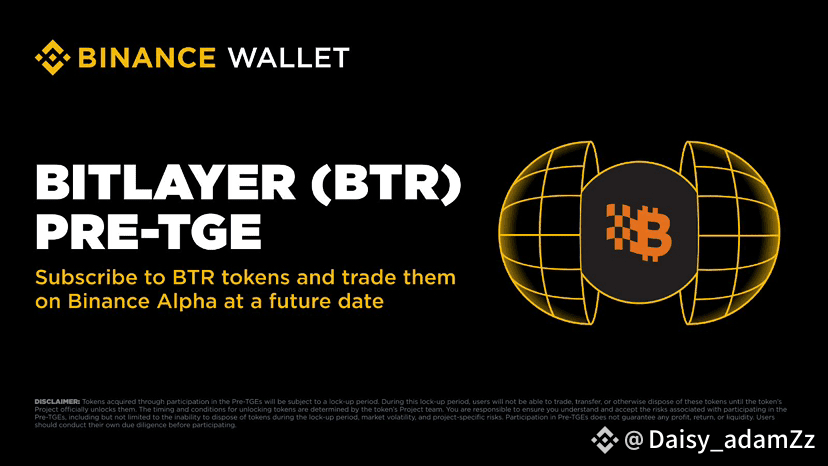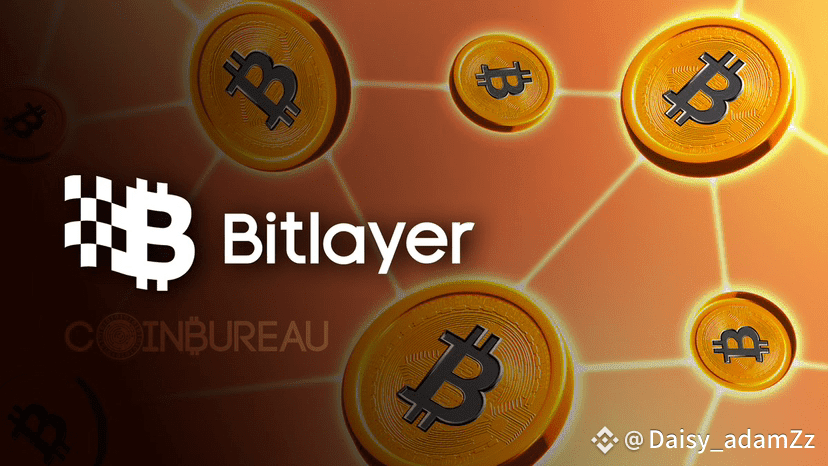Bitcoin’s status as “digital gold” is evolving into an active role in decentralized finance. As major institutions and public companies accelerate Bitcoin adoption, holders are demanding safe yield on their assets. Bitlayer sits at this intersection, aiming to make Bitcoin productive. Analysts note that “traditional financial institutions, public companies, even large mining pools are beginning to explore ways to activate Bitcoin to generate yield” – a momentum Bitlayer is explicitly targeting . From lending and staking to trading, “the demand for secure, Bitcoin-backed DeFi solutions is skyrocketing” as Bitcoin holders seek returns without sacrificing security . Bitlayer’s mission is to capture this BTCFi opportunity by building the infrastructure that safely channels Bitcoin into DeFi.
Core Innovations: BitVM Bridge & High-Performance Rollup
Bitlayer’s technology stack has two pillars: a BitVM Bridge (and YBTC token) and the Bitlayer Network (a Bitcoin-native rollup). The BitVM Bridge is a next-generation, trust-minimized BTC bridge. It uses BitVM’s on-chain verification to wrap Bitcoin into a new token (YBTC) on Layer 2, ensuring only one honest party is needed to secure funds. In practice, this means BTC can flow into DeFi ecosystems without custodians or trusted intermediaries. Each YBTC is backed 1:1 by on-chain Bitcoin, so holders can “generate sustainable returns without compromising asset security” . In other words, your BTC becomes a programmable asset that can be lent, staked or traded like any DeFi token.

Complementing the bridge, the Bitlayer Network is a high-speed Bitcoin Rollup built on BitVM. It features an EVM-compatible execution engine with sub-10ms latency, enabling real-time, low-cost smart contracts with Bitcoin’s security guarantees . Over 200 dApps are already live on Bitlayer, with TVL around $850 million – evidence of a rapidly growing ecosystem . Developers can build sophisticated DeFi apps (DEXes, lending platforms, NFTs, etc.) that settle on Bitcoin layer‑1 for “hard finality” . In essence, Bitlayer aims to be “the Ethereum of Bitcoin”, providing all the composability of DeFi without altering Bitcoin’s core protocol.
BitVM Bridge & YBTC: Trust-minimized Bitcoin bridge. BTC deposits become 1:1 yield-bearing YBTC, unlocking lending, staking, and trading .
Bitlayer Network (Rollup): EVM-compatible Bitcoin Layer 2 with <10ms finality, low fees and real-time execution, secured by Bitcoin’s proof-of-work

Industry Leadership & Early Milestones
Bitlayer is one of the earliest projects to take BitVM from concept to live deployment. BlockchainBaller observes Bitlayer is “the first project to implement BitVM on a live mainnet” , a claim echoed in Bitlayer’s own blog calling it “the pioneer that truly brought BitVM to the mainnet” . This first-mover advantage means Bitlayer is field-testing BitVM in production now, not years from now. (Its mainnet V1 launched in April 2024, and the trust-minimized BitVM Bridge went live in July 2025 .) In short, Bitlayer isn’t just theorizing Bitcoin DeFi – it’s already operational with live contracts and assets on its network.
Strategic Partnerships & Ecosystem Expansion
Bitlayer’s growth is driven by broad collaboration across crypto. It has forged Layer 1 integrations and mining pool partnerships to boot-strap liquidity and interoperability. For example:
Layer 1 Networks: Sui, Base, Arbitrum, Cardano (and others like Starknet, Plume) – enabling YBTC and Bitlayer liquidity to flow between high-speed DeFi ecosystems
Mining Pools: Antpool, F2Pool, SpiderPool – some of Bitcoin’s largest pools have joined forces to strengthen Bitlayer’s security and adoption .
These alliances “position Bitlayer as a hub connecting Bitcoin to the wider blockchain economy” . By integrating with top smart contract chains and Bitcoin infrastructure providers, Bitlayer’s ecosystem effect multiplies: YBTC can plug into non-Bitcoin DeFi, and the rollup inherits trust from the Bitcoin network itself.
Institutional Backing & Funding
Bitlayer’s vision has attracted heavyweight investors. In total it has raised about $25 million to date. A recent Series A extension of $9 million was co-led by Polychain Capital and Franklin Templeton . Earlier funding rounds included a $5M seed and an $11M Series A from firms like Framework Ventures and ABCDE Capital . In all, the cap table reads like a who’s-who of crypto & finance: Polychain, Franklin Templeton, Framework Ventures, ABCDE, StarkWare Ventures, OKX Ventures, Alliance DAO, and others . This institutional support underscores confidence in Bitlayer’s approach.
Key Investors (2024–25):
• Polychain Capital
• Franklin Templeton
• Framework Ventures
• ABCDE Capital
Community Incentives: Airdrop & Booster Campaign
To bootstrap its community, Bitlayer has teamed up with Binance Wallet on a multi-phase Booster Campaign. Running now, Phase 2 awards a portion of 30 million BTR tokens to users who complete simple tasks (like minting YBTC or trading on Bitlayer) via the Binance Keyless Wallet . The Phase 2 reward pool is 7.5 million BTR (to be shared among eligible participants, e.g. first 28,000 users or lucky draw winners) . Crucially, holding 61+ Alpha Points in Binance Wallet makes a user eligible. In parallel, Bitlayer will soon host a Pre-TGE Event: qualified users can subscribe to 20 million BTR at $0.02 each . This gives early supporters a chance to accumulate BTR before the token officially launches.

These campaigns serve dual purposes: spreading awareness and distributing tokens widely. As Binance’s LearnToEarn notes, Phase 2 of the Booster runs until August 14, 2025, with users “earning BTR tokens” for on-chain actions . Participants should watch for further phases and for the upcoming Token Generation Event, which may include bonus promotions or “carnival” rewards. (In fact, a $1.2M reward pool called the “BTCFi Carnival” has been hinted to drive community engagement around the Pre-TGE
Price Outlook for $BTR
At its Pre-TGE price of $0.02, Bitlayer’s initial market capitalization will be relatively small (on the order of tens of millions). Crypto analysts expect strong early volatility. For example, one Binance community forecast suggests $BTR could “push the price above $0.06 in the first weeks” after listing – about three times the Pre-TGE price . Longer-term models (citing ecosystem growth and continued token unlocks) envision Bitlayer averaging around $0.06–$0.10 by end-2025, and potentially reaching $0.13–$0.16 by 2029–2030 if its DeFi network expands as planned .
It’s important to stress that these figures are speculative. Token prices often experience whipsaw swings, especially early on. Indeed, Bitlayer itself cautions that after an initial “FOMO explosion,” prices may correct before stabilizing . In any case, $0.02 serves as the baseline. If Bitlayer’s bridging and Rollup deliver on their promise, $BTR could see multi-fold gains from that level. But investors should factor in crypto volatility and do their own due diligence.
Conclusion: A New Era for Bitcoin DeFi
Bitlayer is carving out a unique niche: bringing EVM-level programmability and yield opportunities natively onto Bitcoin while keeping Bitcoin’s core security. Its trust-minimized bridge and high-speed rollup give Bitcoin holders tools they’ve long wanted. With live mainnet contracts, real assets (YBTC), major partnerships (Sui, Base, Arbitrum, Cardano, Antpool, etc.), and heavy-hitting backers (Polychain, Franklin, etc.), Bitlayer is widely seen as “the backbone of Bitcoin’s decentralized future” . Nevertheless, Bitcoin DeFi is still nascent. Success will require sustained developer interest, user adoption, and smooth token launches. For now, Bitlayer offers a rare glimpse of Bitcoin’s next chapter – and an early stake in that story is being distributed through its active campaigns.
Price Prediction (Speculative): Based on current forecasts, $BTR might initially spike to ~$0.06 post-listing and average $0.06–$0.10 by late 2025 . Longer term, some models put it in the low double digits (e.g. ~$0.13–$0.16 by 2029–30) if adoption is strong . These are illustrative targets, not guarantees – the market’s appetite for Bitcoin-native DeFi will ultimately set $BTR’s trajectory
 .
.
Sources: Official Bitlayer releases, Binance and crypto media cover Bitlayer’s tech, partnerships, funding and token campaigns . Always DYOR before investing.


